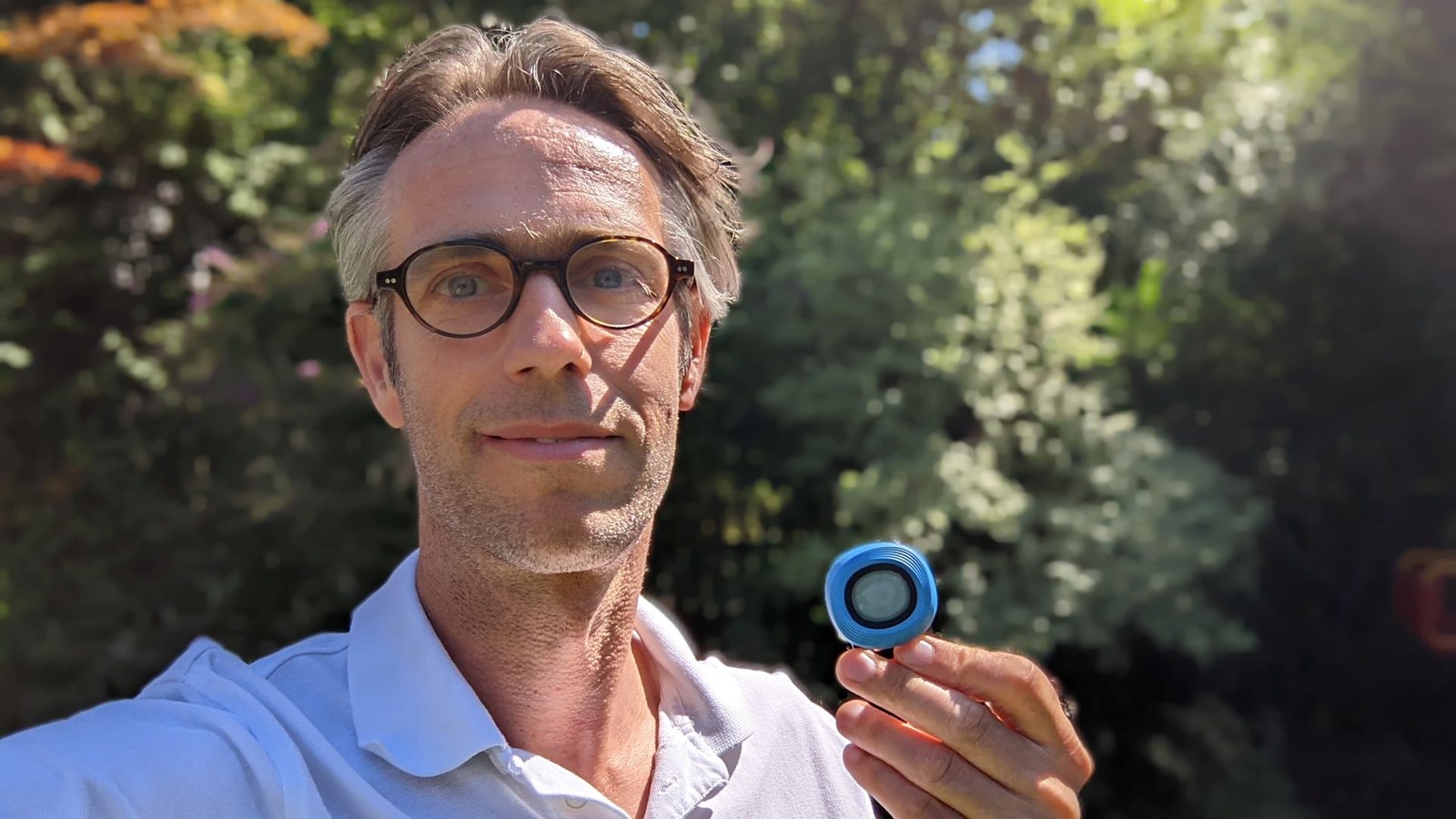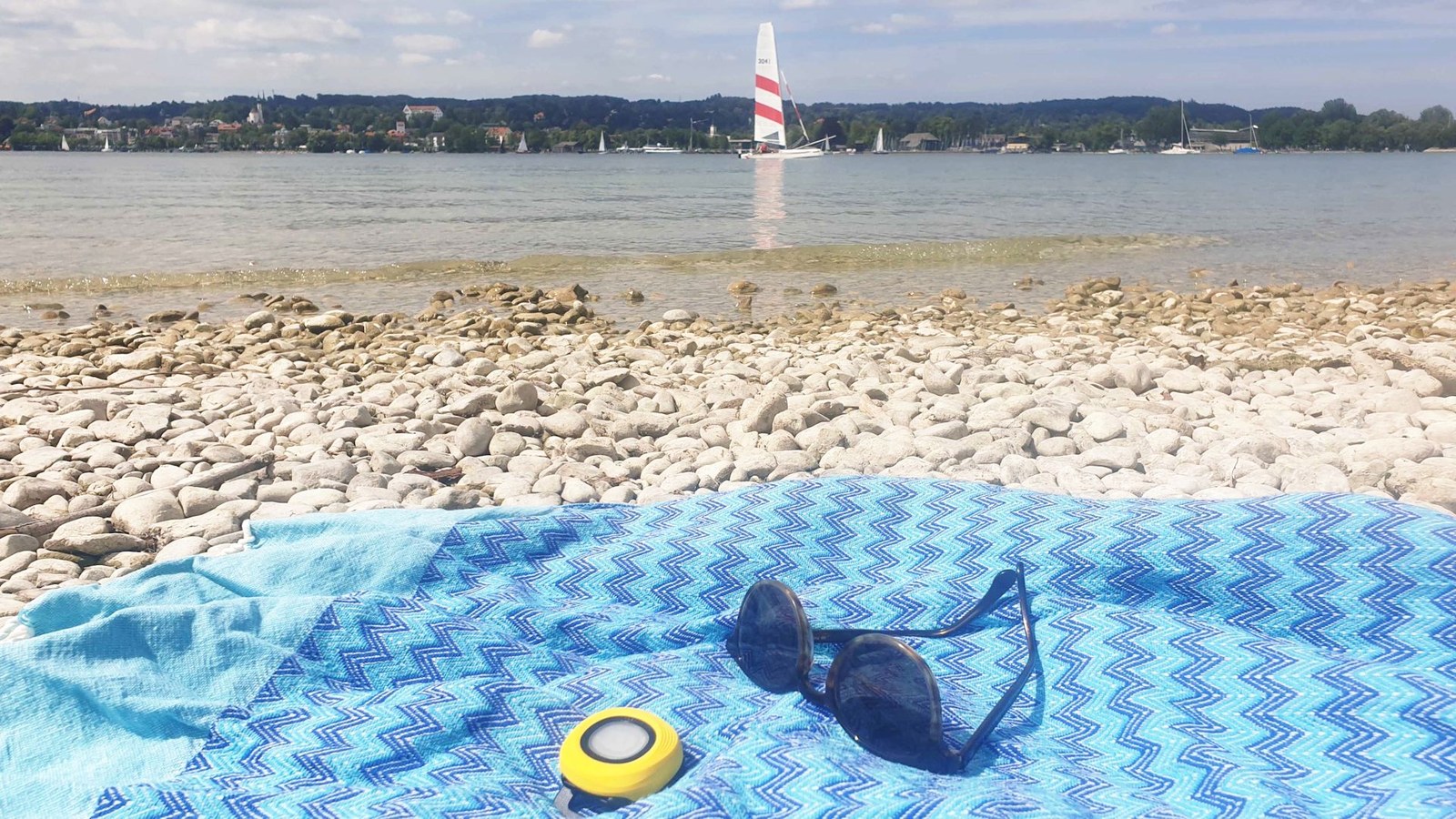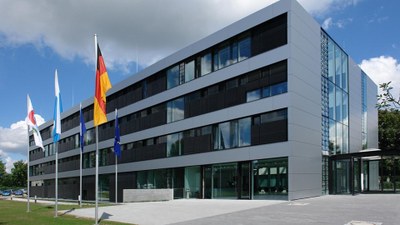Harnessing atmospheric research and physics to combat sunburn

There are three things you should know about Julian Meyer-Arnek: he loves being outdoors, he has a young daughter, and he is a theoretical physicist and atmospheric researcher. Three years ago, with support from DLR Technology Marketing, the combination of these factors led him to develop and market the UV-Bodyguard, a product that measures UV radiation and warns the user via an app if they are at risk of sunburn. This work saw Julian take on new responsibilities and go on to found the company ajuma GmbH, where he continues to work on improving the product.
In this interview, the physicist, who works at the German Remote Sensing Data Center, reveals what it needs to develop the UV-Bodyguard.
How did a theoretical physicist come to invent the UV-Bodyguard?
My background as a scientist is in atmospheric physics. I remained in the field of atmospheric observation after my studies and even during my doctorate, a lot of my time was devoted to radiative transfer simulations – computer models that describe how solar radiation is distributed in the atmosphere. This work looked at key factors such as how radiation is scattered by small particles at a molecular level and larger droplets, as well as how radiation is absorbed by trace gases such as ozone. Taking these processes into account, you can simulate the characteristics of the radiation that actually reaches Earth’s surface. For human beings, the dangerous thing about UV radiation is that we cannot see it. We notice the warmth of the Sun and see the sunlight, but we do not feel the UV radiation itself. Thermal radiation may not penetrate through thin closed cloud cover, but even then, the light contains much more UV radiation than we may think.
What are you currently working on at the German Remote Sensing Data Center?
I work in the Information Technology Department, so I am at the interface between scientific research and IT. Among other things, I am working on a project investigating technologies for optimising the processing of long-term series data acquired using satellites. We are developing, testing and implementing new approaches to address this. I am also involved in creating scientific data sets from this research environment, which will later be published as part of our EOC Geoservice. This is primarily a matter of making information attained through scientific research available and tangible for internal and external users. We extract products from the ivory tower of academia and publish them in an easily understandable way for other researchers, for the public and for decision-makers.
ajuma’s UV-Bodyguard is a highly practical application – no ivory towers in sight. How does this measuring system work?
The user wears the UV-Bodyguard sensor on their body, ideally oriented or fastened in such a way that it is aligned with the direction of the sun as it beats down on the most exposed parts of the body. This will depend on whether the wearer is playing beach volleyball, lying on a sun lounger or skiing in winter. The sensor is connected to an app via Bluetooth. The app only needs to know the user’s skin type and the Sun Protection Factor of their sunscreen. To convert the sensor data provided by the UV-Bodyguard into the skin-dependent UV intensity, the app uses the location of the smartphone and the information determined by the sensor relating to the position of the Sun, the cloud cover and the ozone level. The ozone level is determined using information provided by the Copernicus Atmosphere Monitoring Service (CAMS), which is part of the Copernicus Services established by the EU.
The UV-Bodyguard not only protects against excessive UV radiation, but also offers users recommendations related to their vitamin D production. The body does require a certain amount of sunlight for the production of vitamin D to take place. We are currently conducting a study in conjunction with the German Sport University in Cologne, in which the youth teams of FC Cologne and Bayer Leverkusen are wearing the UV-Bodyguard around the clock. This enables us to research the connection between vitamin D levels and exposure to the sun more comprehensively.
How did you come up with the idea of developing a measuring device that would allow people to measure the incidence of UV radiation on their own bodies?
At DLR, I worked for a number of years on a project called UV-Check, which was carried out on behalf of the Federal Association of German Dermatologists. This involved calculating a healthy amount of time spent in the sun for a specific location and providing a notification via an SMS service when this amount of time had been reached: this later became a WAP service and then notification via an app. However, this did not take cloud cover into account. I always thought that the technology could be improved by adding an in situ component. The final push was the birth of our daughter. We are both very outdoorsy and were keen to take her with us on our adventures. At the same time, of course, we wanted to protect both her and us against sunburn and, in the worst-case scenario, against skin cancer.
What were the biggest challenges that you faced in bringing this product based on scientific research to the market?
I knew that there was no other UV sensor selling at a consumer-friendly price point that reflects exactly what is happening on the surface of the skin. Our existing sensor was sensitive to UV, but it dealt with too large a range to be useful when it came to factors related to sunburn and vitamin D. With that in mind, I had to devise a weighting that would translate the results from the sensors into skin-related information for different positions of the sun and ozone levels in the stratosphere. There was also plenty of practical work to be done: to test our UV-Bodyguard during the height of the COVID-19 pandemic, I ensconced myself on the balcony of the hotel in Tenerife where we were staying, attached over 100 UV-Bodyguards to myself and lay there from morning to evening. Beside me, I set up a high-precision calibrated UV spectrometer, with the aim of comparing and validating the measurements and their accuracy.
Does this mean that your work on the UV-Bodyguard is complete, or is there more to be done?
At the moment, we are considering how to adapt the overall system so that the UV-Bodyguard can also be used for health and safety applications in the workplace. It would be especially useful for construction site personnel, gardeners and roofers.
DLR’s German Remote Sensing Data Center
The German Remote Sensing Data Center (DFD) is based in Oberpfaffenhofen, near Munich, and in Neustrelitz, Mecklenburg-Vorpommern. The DFD and the Remote Sensing Technology Institute make up the Earth Observation Center (EOC) – the foremost hub of expertise for Earth observation in Germany. The EOC’s ground stations in Germany and abroad provide direct access to the data from international Earth observation satellites.
The DFD processes the data into information products, distributes them to users and secures all data in the German Satellite Data Archive over the long term. It works with partners in Germany and further afield.


